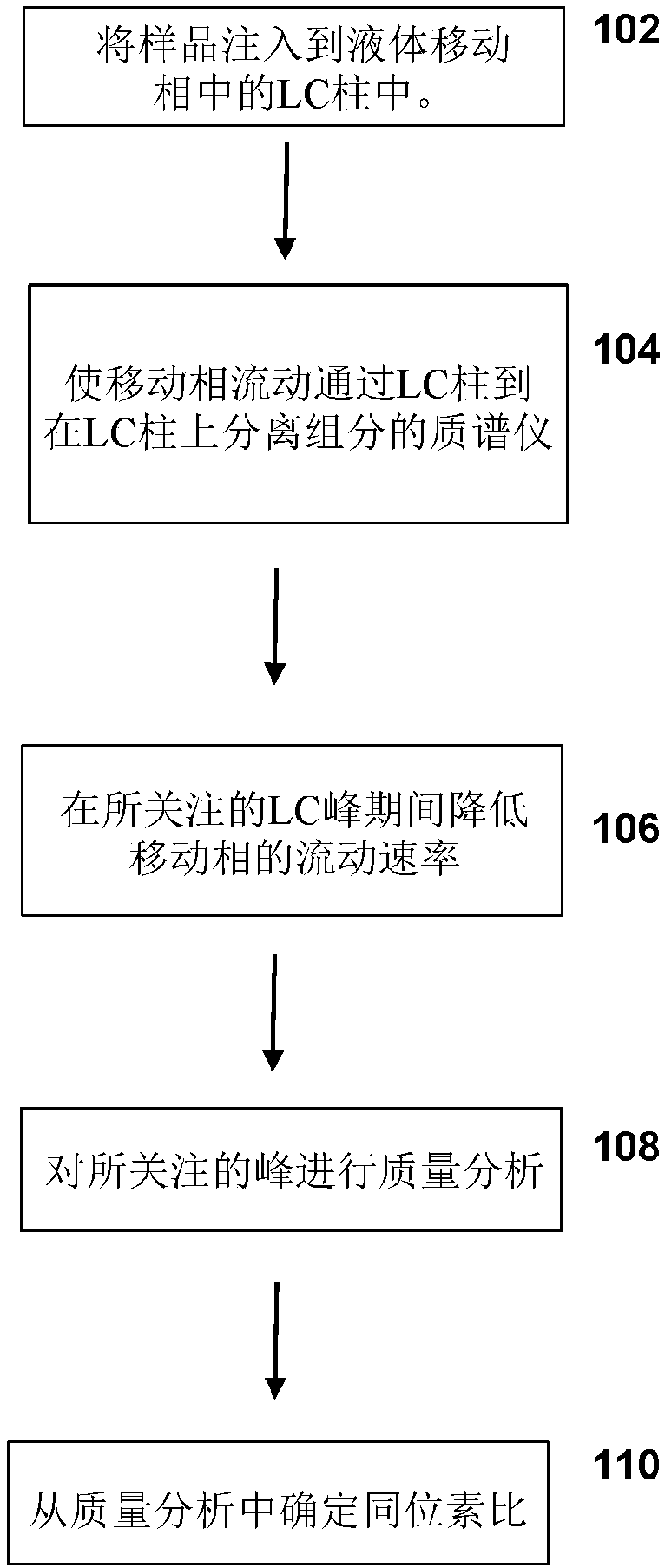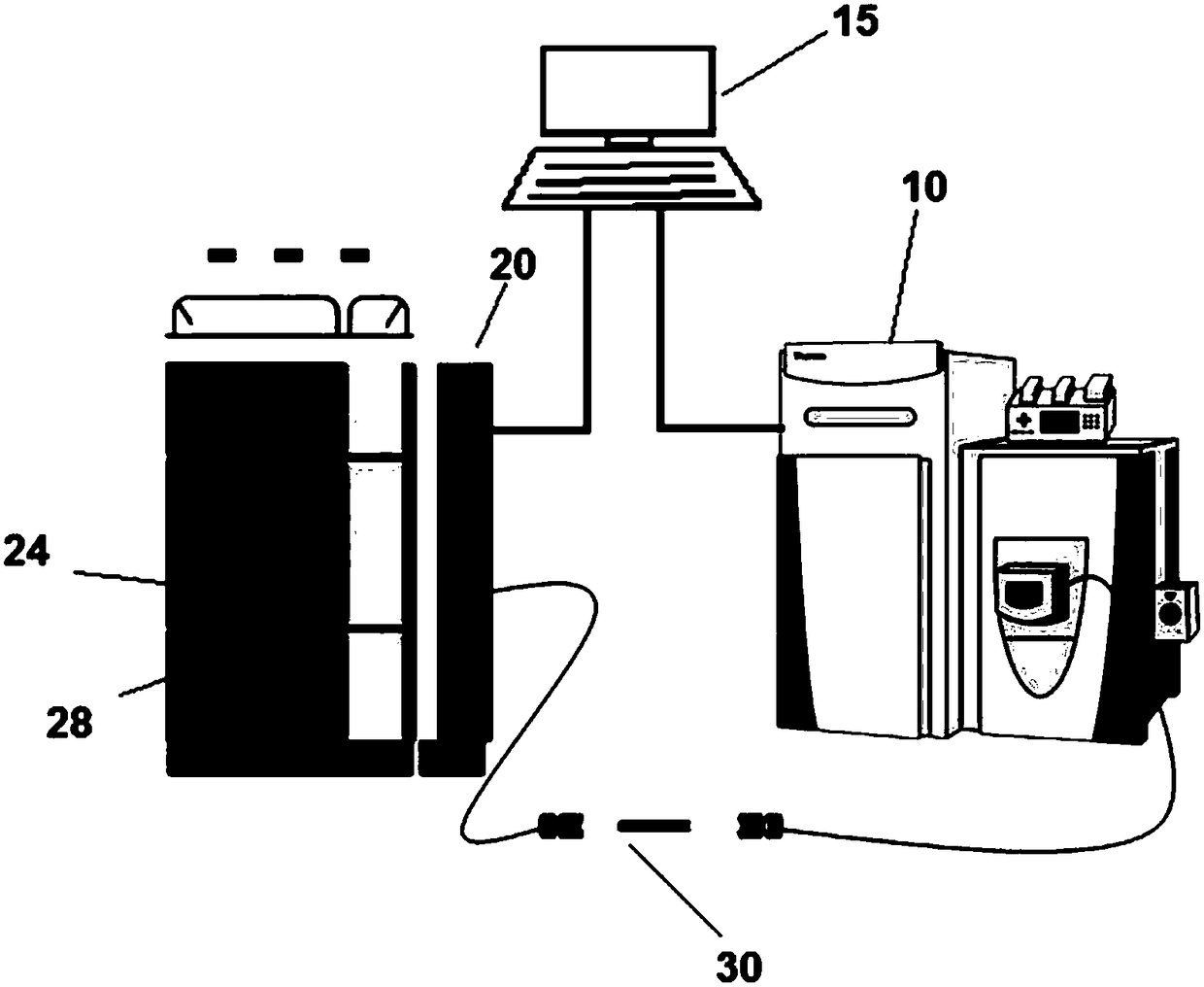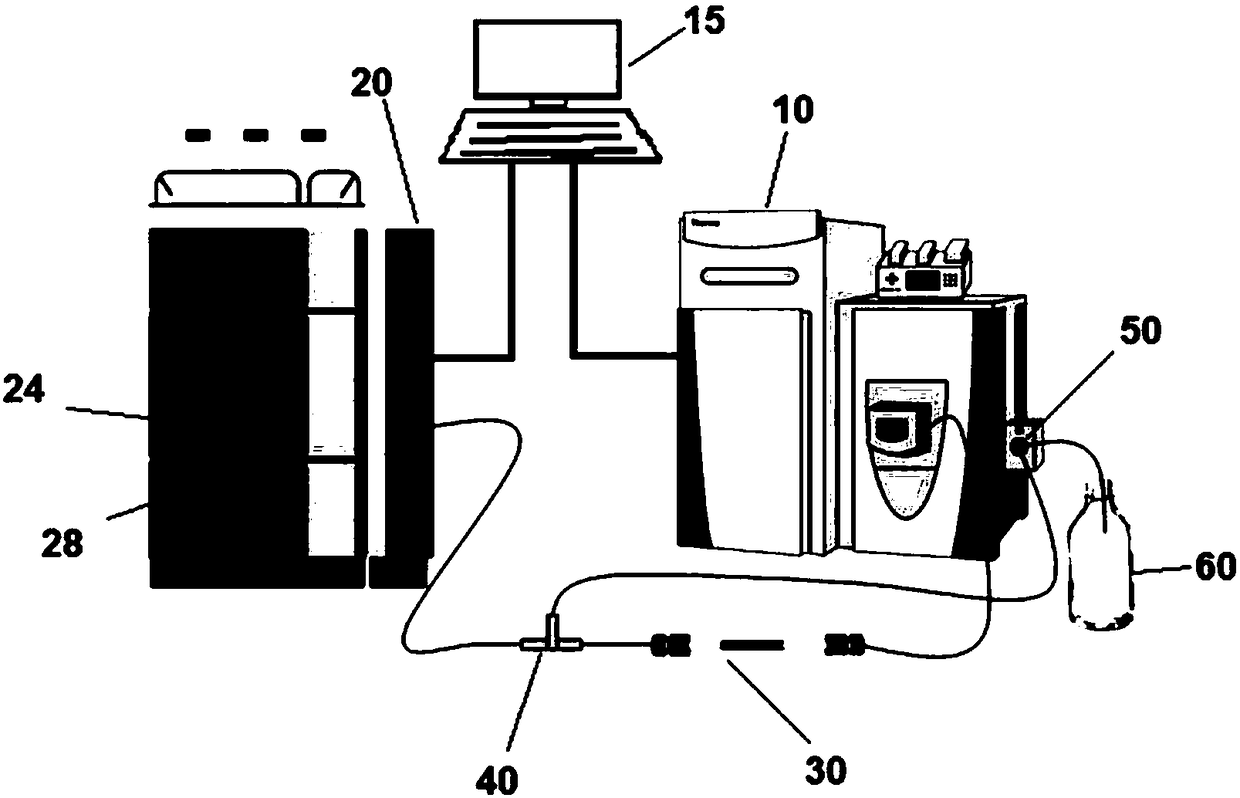Method and apparatus for isotope ratio mass spectrometry
An isotope ratio mass spectrometry and isotope ratio technology, applied in the field of mass spectrometry, can solve problems such as the accuracy and accuracy of isotope ratio measurement, system complexity, etc.
- Summary
- Abstract
- Description
- Claims
- Application Information
AI Technical Summary
Problems solved by technology
Method used
Image
Examples
example 1
[0124] Example 1 - Injection Measurement (Comparative Example)
[0125] Sample solutions of the samples listed in Table 1 in methanol / water 50:50 (v:v) were prepared at approximately 10 μg / ml and injected directly into standard Thermo Scientific in an orbitrap mass spectrometer. A schematic diagram of the instrument is shown in Figure 4 In, the instrument is a preferred mass spectrometer for use in the present invention. The mass spectrometer 200 includes an electrospray ion source 202 that generates ions that enter an RF lens 204 before being directed by active beam-steering ion optics 206 to a quadrupole mass filter 208 . The mass isolation window can be set by the mass filter to emit ions of a desired mass to the downstream ion trap (C-trap) 210, where the ions can accumulate before ejecting the ions to the orbitrap mass analyzer 212 for mass analysis. If desired, the ions can be emitted through the C-trap 210 to a downstream higher energy collisional dissociation (H...
example 2
[0138] Example 2 - LC / MS measurement without reduced flow (comparative example)
[0139] Solutions of the samples listed in Table 1 in methanol / water 20:80 at 10 μg / ml (+ / −0.02 μg / ml) were used in the experiments. Such as figure 2 The LC / MS system schematically shown in was used with the following LC setup:
[0140] - Thermo Fisher Scientific with autosampler and quaternary pump system
[0141] - 10 μl injection (corresponding to 100ng injection)
[0142] -Thermo Fisher Scientific Accucore aQ column; 2.1×100mm, 2.6mm particle size
[0143] - Solvent A: water, 0.1% formic acid (FA), 2 mM ammonium acetate
[0144] - Solvent B: methanol, 0.1% FA, 2 mM ammonium acetate
[0145] - Solvent Gradient 100% A (0 to 0.5 minutes); 50% A / 50% B (0.5 to 3.0 minutes); 20% A / 80% B (3.0 to 3.3 minutes); 100% A (3.3 to 5 minutes) . Figure 8 The solvent step gradient used in the experiment is shown.
[0146] Operate the mass spectrometer with the following parameters:
[0147] - Ma...
example 3
[0161] Example 3: LC / MS measurements with reduced flow
[0162] Sample solutions of the samples listed in Table 1 in methanol / water 20:80 at 10 μg / ml (+ / −0.02 μg / ml) were used in the experiments. Such as image 3 The LC / MS system schematically shown in was used with the following LC setup:
[0163] - Thermo Fisher Scientific with autosampler and quaternary pump
[0164] - 10 μl injection (corresponding to 100ng injection)
[0165] -Thermo Fisher Scientific Accucore aQ column; 2.1100mm×, 2.6mm particle size
[0166] - Solvent A: water, 0.1% FA, 2mM ammonium acetate
[0167] - Solvent B: methanol, 0.1% FA, 2 mM ammonium acetate
[0168] - Gradient 100% A (0 to 0.5 minutes); 50% A / 50% B (0.5 to 8.5 minutes); 20% A / 80% B (8.5 to 9.0 minutes); 100% A (9.0 to 11.0 minutes) ( step gradient)
[0169] - Diverter valve switched at t=2.75 min and t=8.00 min
[0170] Figure 11 The solvent step gradient used in the experiment is shown. In this experiment, a reduced flow sett...
PUM
 Login to View More
Login to View More Abstract
Description
Claims
Application Information
 Login to View More
Login to View More - R&D
- Intellectual Property
- Life Sciences
- Materials
- Tech Scout
- Unparalleled Data Quality
- Higher Quality Content
- 60% Fewer Hallucinations
Browse by: Latest US Patents, China's latest patents, Technical Efficacy Thesaurus, Application Domain, Technology Topic, Popular Technical Reports.
© 2025 PatSnap. All rights reserved.Legal|Privacy policy|Modern Slavery Act Transparency Statement|Sitemap|About US| Contact US: help@patsnap.com



